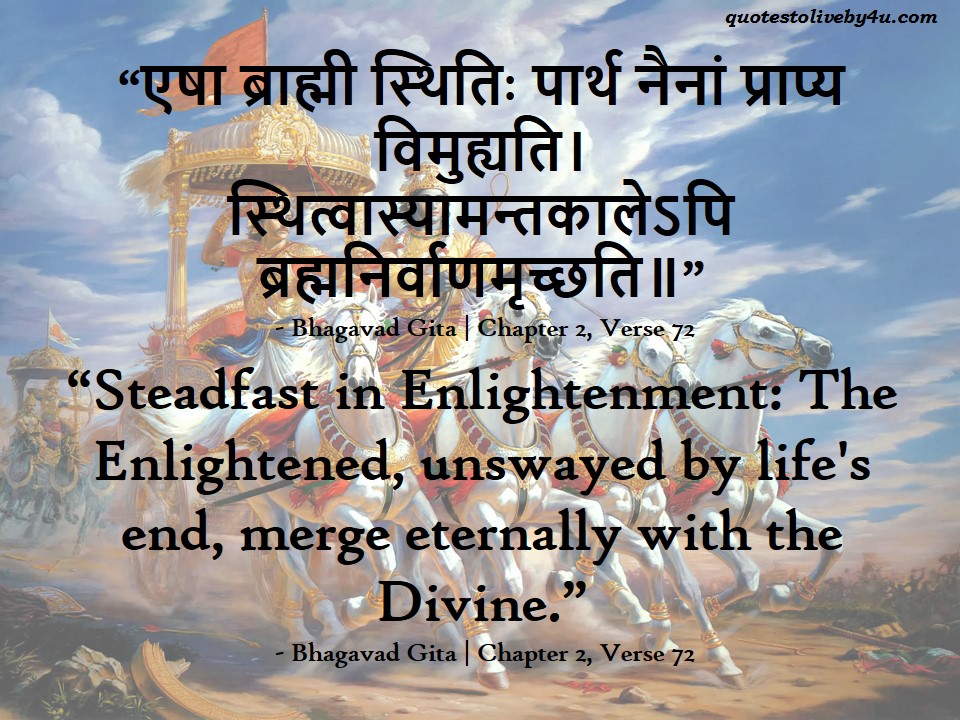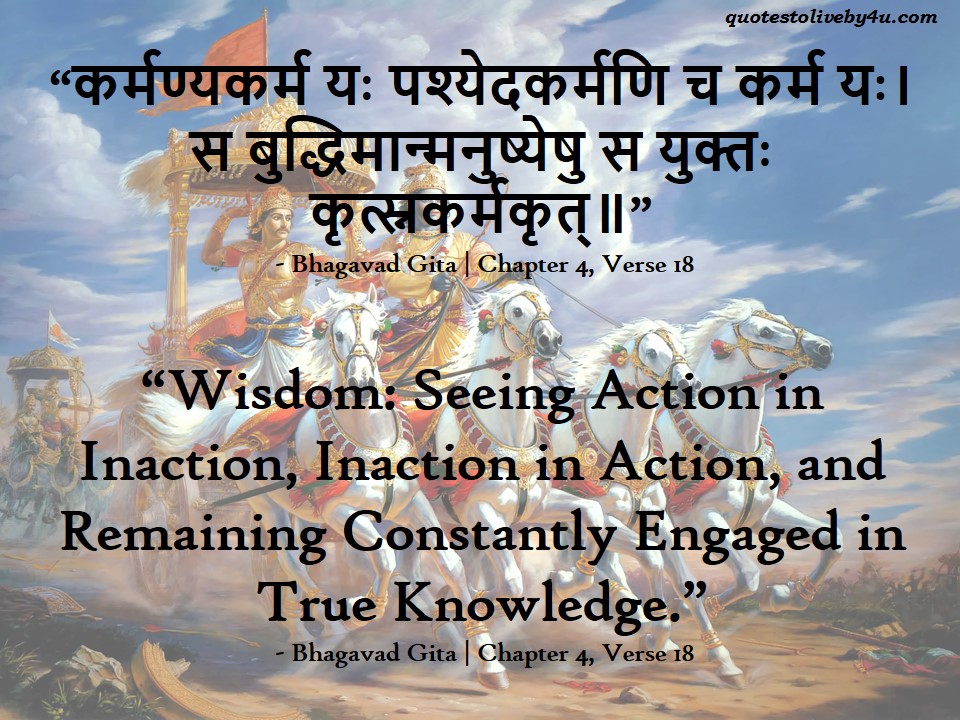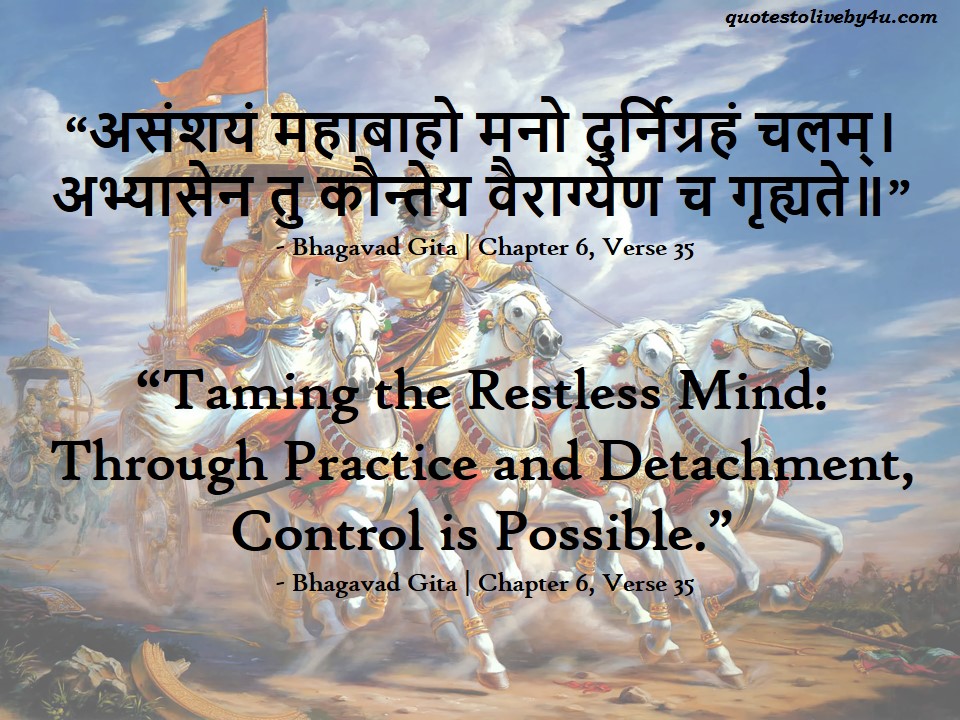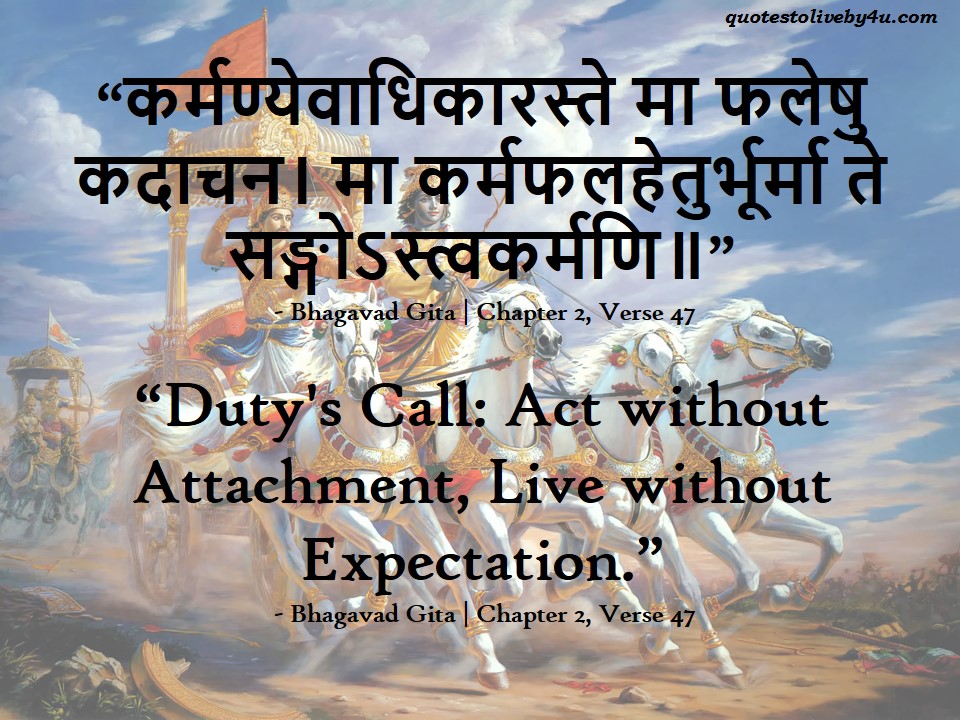This verse from Chapter 2, Verse 72 of the Bhagavad Gita underscores the state of enlightenment and the inner stability that comes with it. Let’s delve into the practical significance of this verse through relatable examples from everyday life:
Verse: "एषा ब्राह्मी स्थितिः पार्थ नैनां प्राप्य विमुह्यति। स्थित्वास्यामन्तकालेऽपि ब्रह्मनिर्वाणमृच्छति॥"
Translation:
“O Partha, such is the state of enlightenment attained by one who is established in Brahman. Having attained this state, even at the hour of death, one is neither deluded nor distracted. On departing, one reaches the state of absolute oneness with Brahman.”
Explanation with Examples:
- The Focused Artist: Consider an artist deeply immersed in their craft, whether it’s painting, music, or writing. When they’re fully engrossed in their creative process, they enter a state of complete absorption. In this state, they are not distracted by external circumstances or the passing of time. They are solely focused on their art, free from doubts or restlessness. Similarly, a spiritually evolved person remains anchored in their inner awareness, detached from the fluctuations of life, and experiences a sense of unity with the universe.
- The Confident Athlete: Imagine an athlete competing in a challenging event. If they’ve diligently trained and prepared, they approach the competition with confidence. In the heat of the moment, they’re not shaken by external pressures or nervousness. Their focused mindset allows them to perform their best, undeterred by the fear of failure. In a similar manner, a person established in their spiritual understanding remains steady amidst life’s trials, unaffected by uncertainties, and attains a state of inner tranquility.
- The Calm Caregiver: A caregiver looking after a sick family member requires patience and emotional stability. While they may face moments of distress or fatigue, their devotion to their duty keeps them centered. They provide care without being overwhelmed by emotions or outcomes. A spiritually attuned person similarly performs their responsibilities with equanimity, regardless of challenges, because they understand the impermanence of external circumstances.
- The Mindful Leader: A leader responsible for guiding a team through complex projects needs to remain composed and make decisions based on clear vision rather than emotional impulses. Such a leader’s actions reflect an inner steadiness and self-assuredness. Similarly, a person established in the understanding of their divine essence acts with clarity and wisdom, unaffected by the ebb and flow of worldly situations.
In each of these examples, the common theme is that of being centered, focused, and unswayed by external circumstances. Just as a river flows steadily towards the sea regardless of the obstacles it encounters, a spiritually awakened individual remains poised in the awareness of their interconnectedness with the universe. This verse highlights the culmination of such a state—attaining oneness with the ultimate reality, Brahman, even in the face of life’s final transition.
Know about Bhagavad Gita
The Bhagavad Gita, often referred to as the Gita, is a sacred scripture of Hindu philosophy and spirituality. It is a 700-verse dialogue between Lord Krishna and the warrior Arjuna, set on the battlefield of Kurukshetra during a time of moral crisis. The Gita is a part of the Indian epic, the Mahabharata.
The text addresses profound philosophical and ethical questions, exploring concepts such as duty (dharma), righteousness, devotion, selfless action, and the nature of reality. It offers guidance on how to live a life of purpose, integrity, and spiritual fulfillment while navigating the challenges of the world.
The Bhagavad Gita introduces various paths to spiritual realization, including Karma Yoga (the path of selfless action), Bhakti Yoga (the path of devotion), and Jnana Yoga (the path of knowledge). It teaches the importance of performing one’s duties without attachment to the results, maintaining equanimity in success and failure, and recognizing the interconnectedness of all beings.
The Gita’s teachings extend beyond religious boundaries, resonating with individuals seeking wisdom, ethical insights, and a deeper understanding of life’s complexities. Its universal principles have inspired thinkers, philosophers, leaders, and individuals from various backgrounds across the world. The Bhagavad Gita remains a timeless guide that encourages self-awareness, personal growth, and the pursuit of a harmonious and meaningful existence.




